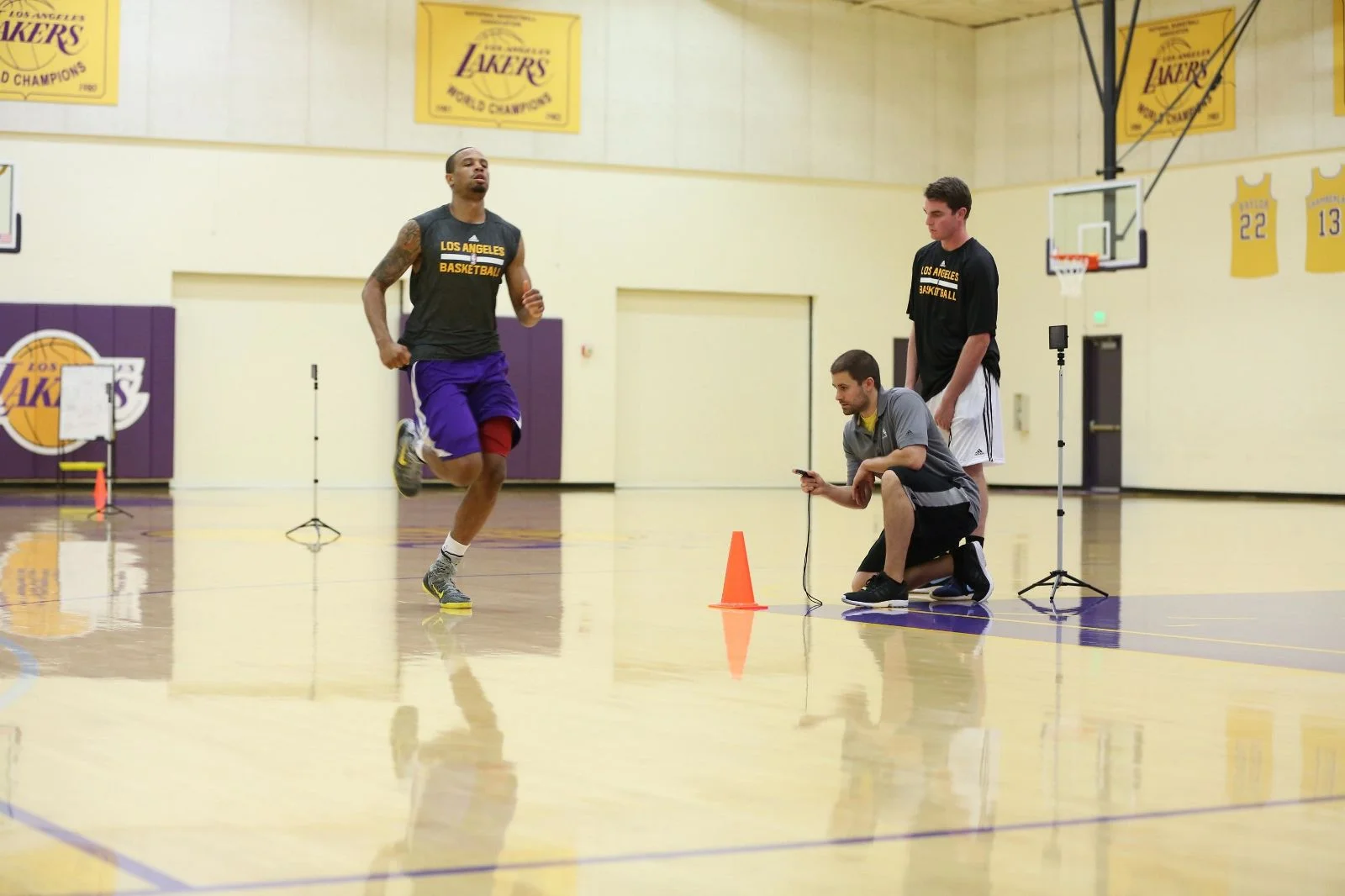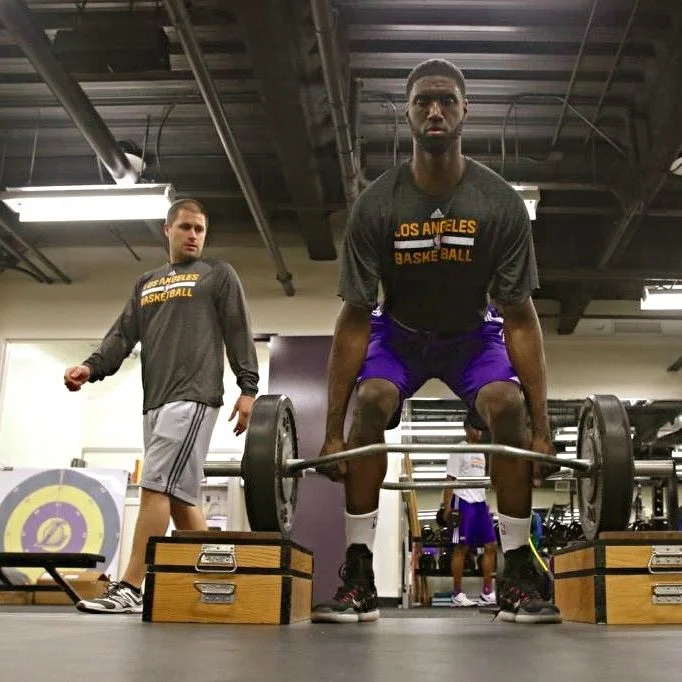As the head strength & conditioning coach for the LA Lakers, part of my job is to make sure players stretch and warm-up correctly before they lift or play. This can be a challenge given that when players aren't playing in games/practices there's a great chance that they are sitting on a bus or airplane. Whether you're sitting all day at work or you're a high level athlete, sitting can cause your hip flexors and hamstrings to get tight and cranky.
Viewing entries in
Training
If you think training your ass off and eating your spinach is the only key to unlocking your athletic prime, sorry there's more to it. As an athlete, you can't afford to just show up and do the work - everyone is different and you need to know exactly what makes you tick. Not just tick though - what is it that makes or breaks your ability to hum like a well oiled athletic machine?
Working with NBA players as the Head Strength Coach of the LA Lakers I meet plenty of dudes who can jump. Training for power and explosiveness is more complex than simply doing more squats and more jumps. You have to translate the power and explosiveness into sport-specific actions.
I see athletes crash and burn in the off-season for 2 common reasons: 1. They view it as a vacation and simply don't do the necessary work. 2. They complicate the off-season training approach and try to do too much. Let's discuss how to avoid either of these extremes and nail down the basic blueprint for major off-season success.
I get some version of this comment/question regularly: "I'm looking to get rid of some of this belly fat so I'm going to ramp up my cardio, any other tricks you got for me TD?" First off, relieve yourself from thinking that the sole solution lies at the gym. What if a major key to sparking body composition change actually lies at the grocery store or in your kitchen?
Strength needs to be a priority. Young, old, athletic or not, building strength will help you. Making an exercise more challenging to execute might look cool but it can compromise it's ability to help you build strength.
Do you ever go to bed with intention of getting up early to sneak in your workout before the day gets away from you? It's one of those things that sounds so good in your head but when the alarm sounds, it doesn't feel like such a good idea.
Developing a big squat requires lots of time, reps and work, but what if there were a few quick fixes to help you tighten up form and bust through squat performance plateaus? Here are 5 strategies you can use to improve your squat performance immediately
Matthew Ibrahim is the Owner of Mobility 101 and the Director of Sports Performance at Boston Physical Therapy & Wellness. He is on a mission to help athletes and clients build stronger, more resilient human movement and performance. Connect with Matthew on Facebook, Instagram, and Twitter. Learn more about Mobility 101 on www.mobility-101.com.
To avoid plateaus in your single leg training you must progress to more comprehensive challenges. Advanced single leg performance demands synergy from the lower body, the core and the upper body.
Painful or disfunctional ankles, knees or hips can make it difficult to get the most out of your training efforts.
Physical training is more than breaking a sweat or burning calories - it's about skill acquisition. The Band Resisted Single Leg Stand-Up is an example of how learning a fundamental physical skill translates into training results.
Bench bridge (aka hip thrust) variations help you to develop your ability to drive force into the ground via hip extension. Applying force into the ground is what propels you up (jumping) and forward (sprinting/running) - areas that most people would be happy to make gains in.
Incorporating this exercise into your training will develop stability, strength and size of the lateral hip musculature. This is critical for activities that demand balance and explosiveness from the single leg - nearly all sport activity requires this at some level.
Saturday, I spoke at the NSCA Southern California State Clinic. There was a great lineup of speakers and a monster turnout of knowledgeable attendees. I presented on mastering the art and science of the dynamic warm-up. It was risky business attempting to step up at 8:30 am and talk about a potentially tired topic that has been regularly recycled over the years. Instead of listing off exercises and drills that can be used in a warm-up, I set out to discuss something less often covered: the 3 principles behind a successful warm-up.
If you're a dad and the jelly bellied, flat chested, skinny armed, cropped butt look has snuck up on you, you're not alone. This look has become common enough among patriarchs that it's earned an unofficial label from the internet: "Dad Bod" - there's even a proposed scientific explanation for the cause of it. Of course if you're showcasing "Dad Bod" by design and with pride then ignore the below and stay "strong" my brother! For any "Dad Bod" club members who are looking for a way out of the club here are a few evidence-based tricks to squash it
Part 1 of this 3 part post looked at some of the secondary factors behind what makes durability so elusive for today's athlete. Part 2 then captured the training environment that today's athletes and fitness diehards live in, how/why it has changed and what that means for staying healthy. Here in part 3, we finally uncover the #1 reason that durability is so elusive for today's athlete and look at a straightforward solution.
In part 1 of this post, I gave attention to the secondary factors that make avoiding injury such a tall task for young athletes: poor sleep, fumbled nutrition, sport overuse and too much sitting. These factors warrant attention but even if an athlete fixed each, they would still find themselves chasing durability until they addressed the primary reason that durability is elusive for today's athlete. Let's examine today's training environment to identify the primary reason that robust and resilient young athletes are a dying breed.
Your one-stop shop for the latest and greatest content that will help you to DISCOVER YOUR EDGE!
If you are involved in competitive athletics at any age or level then you know that unnecessary non-contact injuries are a significant and persistent issue. How is this possible when more science and technology is swirling around sports equipment and human performance than ever before?




















